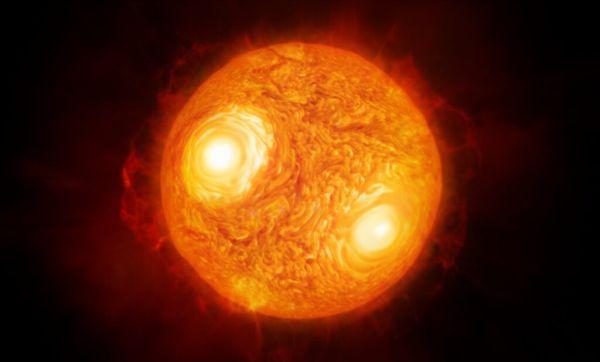
A red giant star shining in the sky was a mystery for astronomers and astronomers for centuries. This star, located on the shoulder of Orayan Nakshatra, often dreets, which has raised questions on its behavior. But now scientists have found a big answer to this mystery. Tara, a hidden companion of Betaljjh, is probably the cause of the ups and downs in its light.
The secret of the betelgeuse star was about the ups and downs in his mysterious light. This red supergiant star used to slow down suddenly every few years, which surprised the scientists. It is now revealed that it has a hidden partner Tara, which affects the gas and dust around it. This is why the brightness of betelgeuse changes. This partner Tara was first seen from Gemini telescope, which has now resolved this old mystery.
With the help of Hawaii -based Gemini North Telescope, scientists have found the first clear glimpse of this retarded fellow star. NASA AAMES chief scientist Steve Howell said, “Many believed that we would never see this fellow star, but the fast accuracy of Gemini telescope made it possible.” Speckle imaging made from Gemini’s technology called ‘Alopke’ cleaned the picture of this star, removing the distortion of the atmosphere. Earlier, Hubble and Chandra Telescope also could not catch this hidden partner.
This partner Tara is a hot and blue-white color star, whose mass is 1.5 times more than the Sun. It is located four times the distance of the Sun from the Earth, within the extended atmosphere of Bettlezzh. According to experts, both these stars were built at the same time, but it developed rapidly due to the size of Bettlezzh being very large, while its partner is still a young star and has not been able to start hydrogen fusion.
Scientists believe that the gravitational force of Betaljjh in future can pull this fellow star. This process can decrease in about 10,000 years, which scientists are calling ‘cosmic caniblisms’. This is the first time that a direct image of a fellow star located so near a red supergiant star has been taken. This discovery also explains the reason behind the regular dim light that comes every six years of Betaljjh.
The next time scientists want to see this fellow star again in 2027, when it will be in its farthest class from Betaljjh. It may be possible to see it more clearly at that time. The study has been published in the prestigious The Astrophysical General and is considered a major step towards understanding the secrets of red supergiant wires.
Justice Verma case will listen to the Supreme Court in the absence of the Chief Justice
America confirmed the tour of Pakistan; Trump-Sharif meeting intensified in Washington!
India will again start a tourist visa for Chinese citizens, taken steps after five years!
-
14 -year -old daughter’s mother lit up the ramp, Riddhima Kapoor Sahni descended as Husnapari in a golden dress

-
Not only blood pressure, beet juice is also very beneficial in these cases of health

-
Three indigenous small modular reactors are building India at a cost of Rs 5750 crore

-
Amazon Great Freedom Festival Sale 2025: Dates, offers, SBI card discounts, top deals

-
Focus on safety of women, this app will tell the truth of the boy before dating
